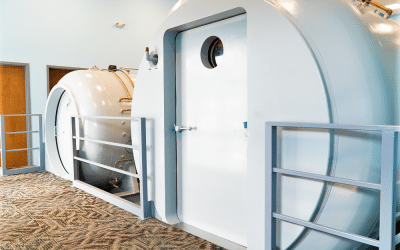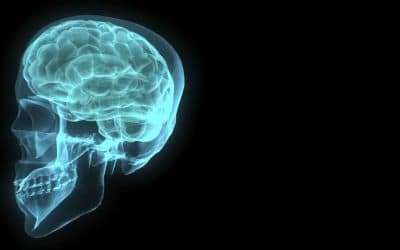Abstract: Autism spectrum disorder (ASD) is characterized as a developmental disability caused by abnormalities in brain function. Studies link ASD with various physiological abnormalities, such as cerebral hypoperfusion, oxidative stress, inflammation, and...
Autism
Hyperbaric Oxygen Therapy (HBOT) Research for Autism Spectrum Disorder.
The effectiveness of hyperbaric oxygen therapy (HBOT) in children with autism spectrum disorders
Abstract Research based on neuro-imaging findings indicate the presence of cerebral hypoperfusion (decreased blood flow) in children with autism spectrum disorders (ASD). One of modern therapeutic methods that can counteract cerebral hypoperfusion in those children is...
Cerebral hypoperfusion in autism spectrum disorder
Cerebral hypoperfusion, or insufficient blood flow in the brain, occurs in many areas of the brain in patients diagnosed with autism spectrum disorder (ASD). Hypoperfusion was demonstrated in the brains of individuals with ASD when compared to normal healthy control brains either using positron emission tomography (PET) or single‑photon emission computed tomography (SPECT). The affected areas include, but are not limited to the: prefrontal, frontal, temporal, occipital, and parietal cortices; thalami; basal ganglia; cingulate cortex; caudate nucleus; the limbic system including the hippocampal area; putamen; substantia nigra; cerebellum; and associative cortices. Moreover, correlations between symptom scores and hypoperfusion in the brains of individuals diagnosed with an ASD were found indicating that the greater the autism symptom pathology, the more significant the cerebral hypoperfusion or vascular pathology in the brain. Evidence suggests that brain inflammation and vascular inflammation may explain a part of the hypoperfusion. There is also evidence of a lack of normal compensatory increase in blood flow when the subjects are challenged with a task. Some studies propose treatments that can address the hypoperfusion found among individuals diagnosed with an ASD, bringing symptom relief to some extent. This review will explore the evidence that indicates cerebral hypoperfusion in ASD, as well as the possible etiological aspects, complications, and treatments.
Positive effects of neurofeedback on autism symptoms correlate with brain activation during imitation and observation
Abstract Autism has been characterized by atypical task-related brain activation and functional connections, coinciding with deficits in sociocommunicative abilities. However, evidence of the brain's experience-dependent plasticity suggests that abnormal activity...
Therapeutic use of hyperbaric oxygen therapy for children with autism spectrum disorder
Autism spectrum disorder (ASD) is neurodevelopment disorder, characterized by impairment in social interaction, verbal and non-verbal communication and the presence of restricted and repetitive stereotyped behaviors. The condition manifests within the first 3 years of life and persists till adulthood. At present, the etiology of ASD is largely unknown, but genetic, environmental, immunological, and neurological factors are thought to play a role in the development of ASD. The prevalence of ASD has increased dramatically in the past few decades. According to current estimates from the United States Centers for Disease Control and Prevention (CDC) as many as 1 in 91 children have ASD in USA.
Hyperbaric oxygen therapy for children with autism spectrum disorder.
As autism spectrum disorder (ASD) is a multifactorial condition, with genetic and environmental risk factors contributing to children’s unique presentation and symptom severity, a range of treatments have been suggested. Parents of children with ASD in my clinic are asking me about alternative therapies to improve their children’s condition. One of those therapies is hyperbaric oxygen therapy (HBOT); commercial advertisement in the past has suggested good results with this approach. Should I recommend the use of HBOT for children with ASD? Answer Hyperbaric oxygen therapy provides a higher concentration of oxygen delivered in a chamber or tube containing higher than sea level atmospheric pressure.
What do Cochrane systematic reviews say about interventions for autism spectrum disorders?
Autism spectrum disorders (ASDs) include autistic disorder, Asperger’s disorder and pervasive developmental disorder. The manifestations of ASDs can have an important impact on learning and social functioning that may persist during adulthood. The aim here was to summarize the evidence from Cochrane systematic reviews on interventions for ASDs. Review of systematic reviews, conducted within the Discipline of Evidence-Based Medicine, Escola Paulista de Medicina, Universidade Federal de São Paulo. We included and summarized the results from Cochrane systematic reviews on interventions for ASDs. Seventeen reviews were included.
Hyperbaric oxygen therapy for people with autism spectrum disorder (ASD).
The rising prevalence of autism spectrum disorder (ASD) has increased the need for evidence-based treatments to lessen the impact of symptoms. Presently, no therapies are available to effectively treat individuals with all of the symptoms of this disorder. It has been suggested that hyperbaric oxygen therapy may alleviate the biochemical dysfunction and clinical symptoms of ASD. To determine whether treatment with hyperbaric oxygen:1. improves core symptoms of ASD, including social communication problems and stereotypical and repetitive behaviors;2. improves noncore symptoms of ASD, such as challenging behaviors;3. improves comorbid states, such as depression and anxiety; and4. causes adverse effects.
Hyperbaric oxygen therapy for the treatment of children and youth with autism spectrum disorders: an evidence-based systematic review
Autism Spectrum Disorder (ASD) is a common disorder that has a complex and heterogeneous etiology. Some evidence suggests that inflammation and oxidative stress may have a pathophysiological link. Hyperbaric Oxygen Therapy (HBOT) has been proposed as a possible therapy. Because HBOT is an expensive treatment with significant commercial opportunity, it is essential for it to have a research evidence base prior to widespread use. To conduct a systematic review of the literature evaluating the clinical impact of HBOT on behavior and development in ASD with a view to inform practice.
Methods A literature search of electronic scientific databases focusing on clinical outcomes of HBOT in ASD was performed. Articles meeting inclusion criteria were independently assessed by reviewers and were classified according to the American Academy of Neurology Guidelines. Recommendations were made based on the evidence.



